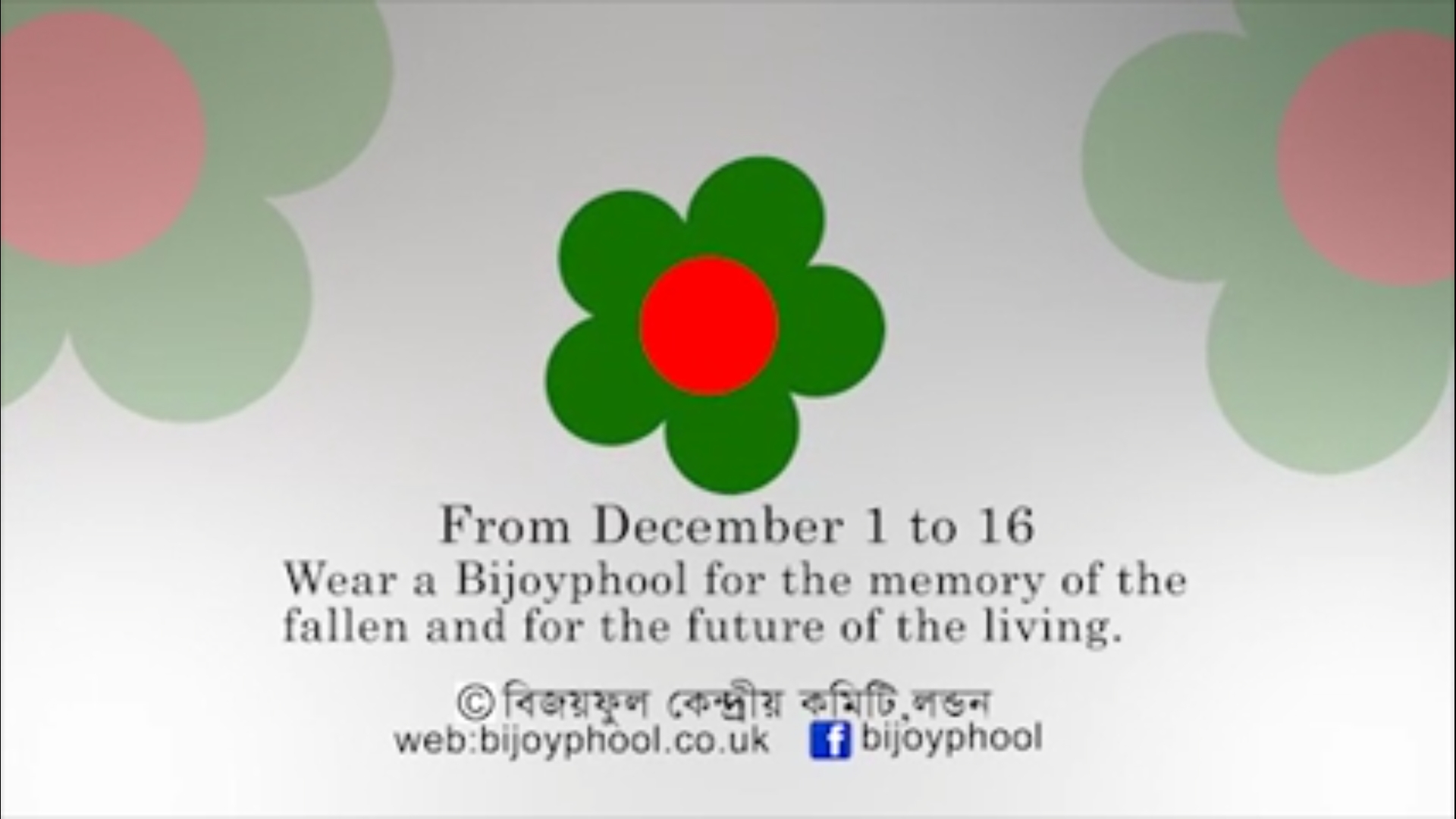Bijoyphool: It’s the time
The “Bijoyphool” (the Victory Flower) is an iconic symbol for the victory of the liberation war of Bangladesh on 16 December 1971, when it emerged as an independent nation on the global map. Every year, the Bangladeshis (citizens of Bangladesh) have been donning the Bijoyphool starting from 1 December till 16 December as a remembrance of their sacrifice in millions and as a celebration of their victory.
History and the context
Inspired by the historical significance of the Poppy appeal in the UK, the London-based acclaimed Bangladeshi poet and writer, Shamim Azad, through her passionate writings since 1998, conceptualized and developed her thoughts around the idea of the Bijoyphool. Enthused by the remarkable response and support from all walks of life, she was encouraged to take the idea further - experimenting with various versions of the symbols, working relentlessly to publicize it and teaching pupils about it through storytelling to children and adults alike. Finally it was shaped as a flower, which was given a name unheard of till then.
The official launch of the Bijoyphool took place in London in 2007. Over the past years, it has become a movement and events have been taking place in various cities in the UK and places around Europe. A chapter has also been opened in Dhaka Bangladesh.
The Bijoyphool, on one hand, is a remembrance flower of the liberation war Bangladesh, its freedom fighters (dead and alive), the victory of the people (the sun in the middle); but on the other hand, it is also a symbol of the country’s lash green land (the colour of petals), the bloody sacrifice of its people (the colour red at the centre), the five fundamental human rights, the five major rives flowing through its land, and the religious and social harmony of five groups of people of the country land – the Muslims, the Hindus, the Christians, the Buddhists and the small ethnographic groups.
But the Bijoyphool is also a means as this little green and red flower can be used to tell stories about Bangladesh’s history and tradition, society and culture, land and its people. It thus provides a range of opportunities for public advocacy and awareness, educational workshops, children’s learning, and above all, to project Bangladesh to the rest of the world.
The campaign of wearing the “Bijoyphool” is being observed irrespective of any location. You can join by simply logging into http://www.bijoyphool.co.uk . This strictly a non-political initiative is spreading fast and gaining popularity at an astonishingly fast speed. But bear this in mind, under no circumstances money can be collected or funds can be raised in the name of the Bijoyphool.

